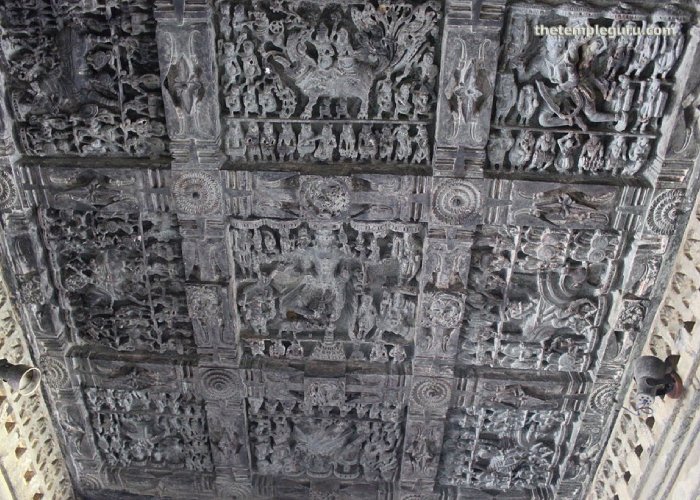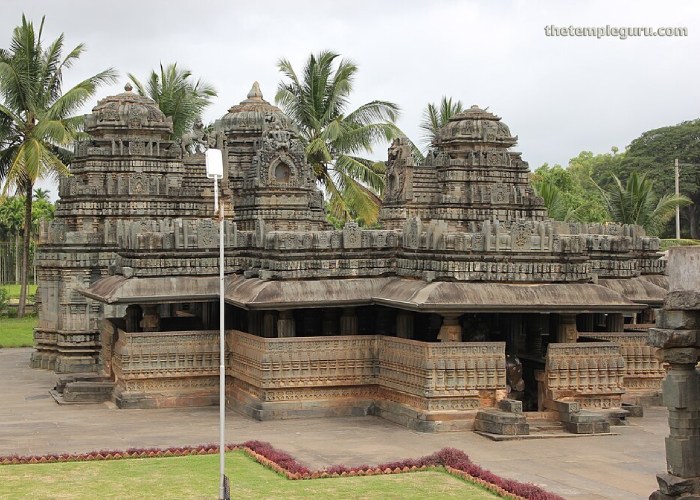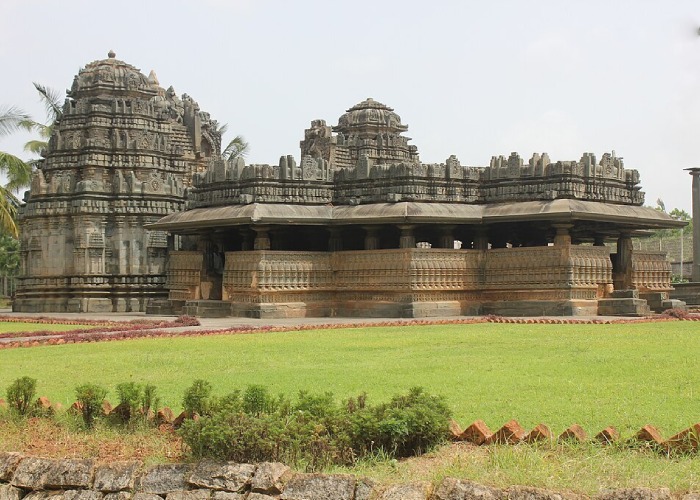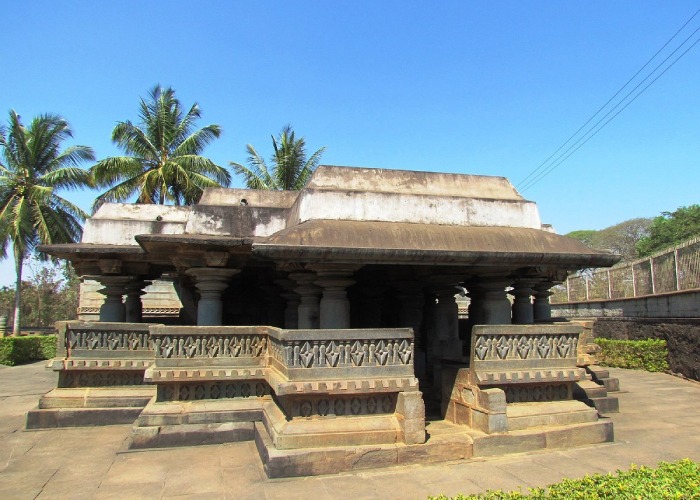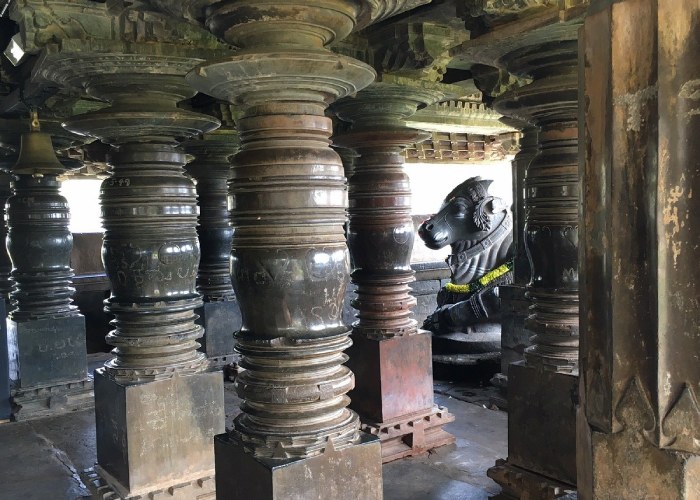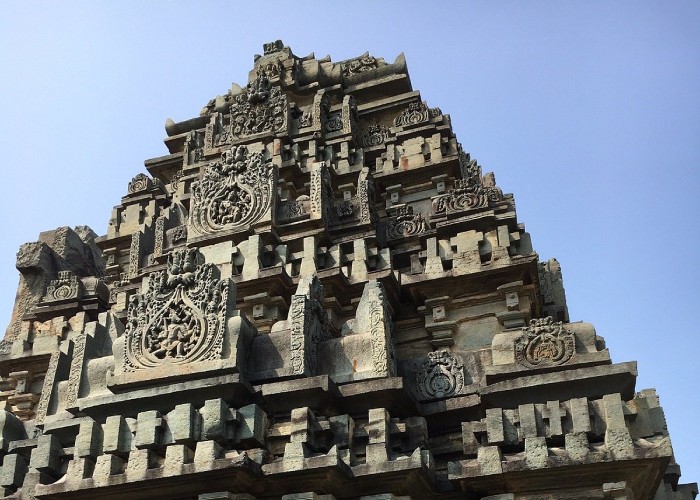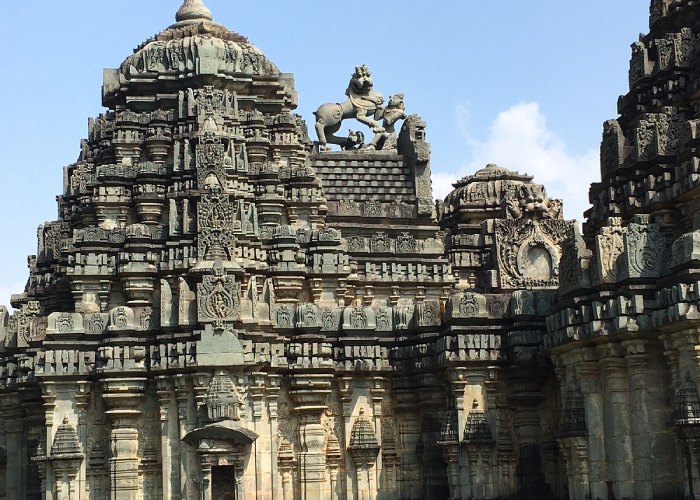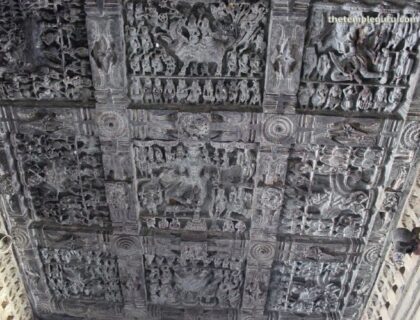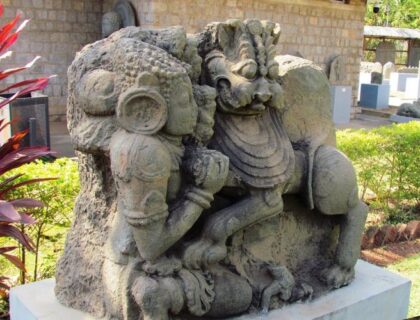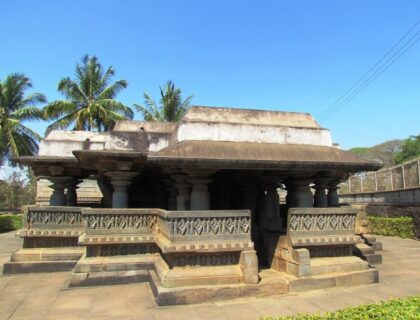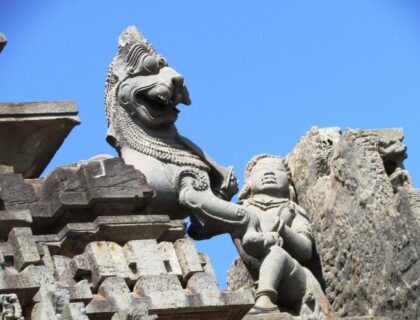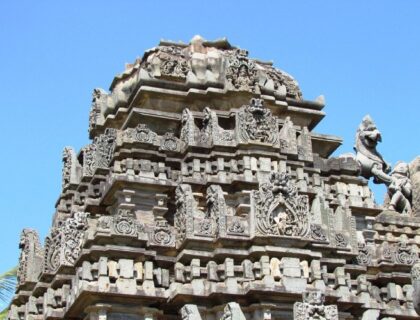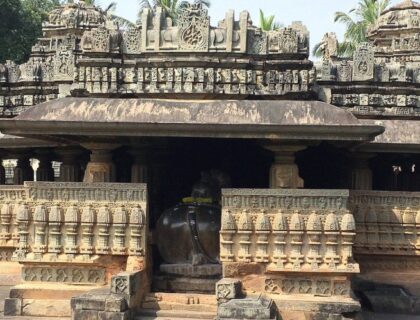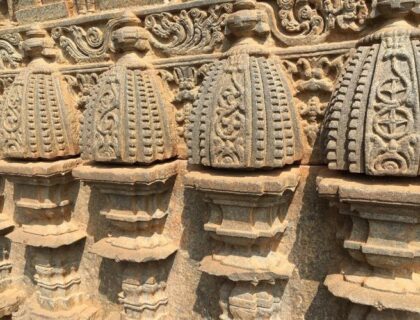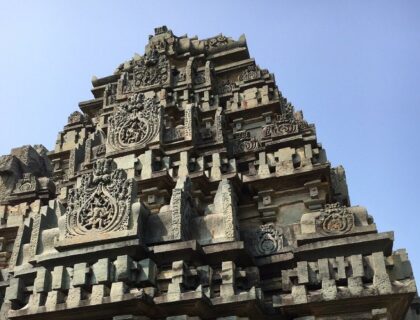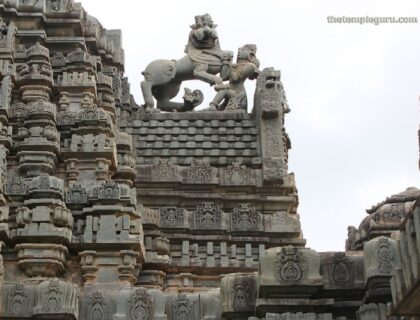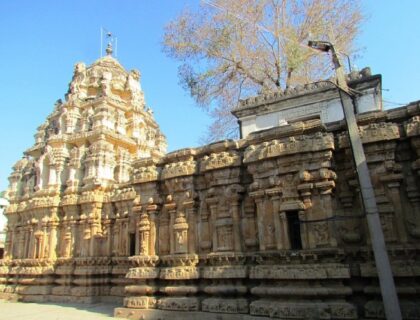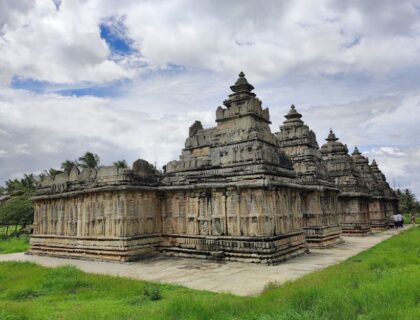Balligavi Kedareshvara Temple
The Balligavi Kedareshvara Temple is Lord Shiva Temple located near Shikaripura in the Shimoga district of Karnataka state, India, in Balligavi. This Place was also known in ancient inscriptions as Belagami, Belligave, Ballagamve, and Ballipura. Balligavi was an important city during Western Chalukya rule in the 11th and 12th centuries, dotted with learning centres (agrahara).
The term Anadi Rajadhani (ancient capital) used to describe this town in mediaeval inscriptions tells a story of great antiquity. According to art historian Adam Hardy, the temple’s construction style is “Later Chalukya, non-mainstream, but relatively close to mainstream.” He dates the temple to the late 11th century, with inscriptional evidence of Hoysala additions made up to 1131 during their control of the region.
Significance of Balligavi Kedareshvara Temple
This temple is designed as a trikutachala (three shrines) and is thought to date from the 11th century. This east-facing temple has Shiva Lingas dedicated in the west and south, as well as a magnificent Lord Vishnu shrine in the north. Historians believe that the Shiva Linga in the south represents Lord Brahma and that the temple was designed to represent the union of the Trinity.

The temple honours the Hindu god Shiva. The Archaeological Survey of India categorises the architectural style as distinctly Hoysala. During this time, the Hoysala ruling family was a powerful feudatory of the imperial Western Chalukya Empire, gaining independence only during the reign of King Vishnuvardhana (1108-1152 A.D.). The Archaeological Survey of India has designated the temple as a national monument.
History of Balligavi Kedareshvara Temple
Balligavi, which housed the idol of Kedareshvara Temple, was a significant city during the Western Chalukya rule in the 11th and 12th centuries. The town, which had various learning centres known as agrahara, was then known as Anadi Rajadhani, which means “ancient capital” in mediaeval inscriptions.
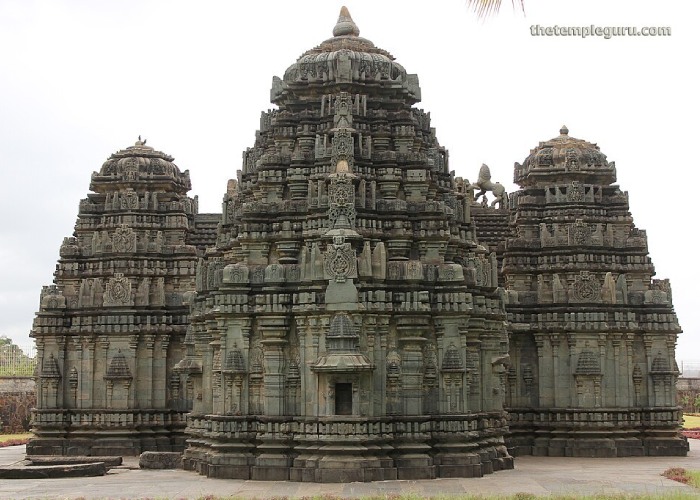
The architectural style used to build the temple has been described as ‘later Chalukya, non-mainstream, relatively close to mainstream’ by Adam Hardy, a famous art historian who dates the edifice to the 11th century. An inscription caved on the temple attests to this fact, mentioning the various developmental activities undertaken by the Hoysala rulers until 1131 A.D.
The Architecture of Balligavi Kedareshvara Temple
The shrines to the west and south contain the Shivalinga (the universal symbol of the Hindu god Shiva), while the shrine to the north contains an image of the god Vishnu. According to some lithic records, the temple is linked to the legend of the demon Bali. In its heyday, the temple drew a large number of followers of Shaivism’s Kalamukha sect. A four-faced image of the god Brahma, which may have once been inside the temple, is on display in the temple complex’s museum.
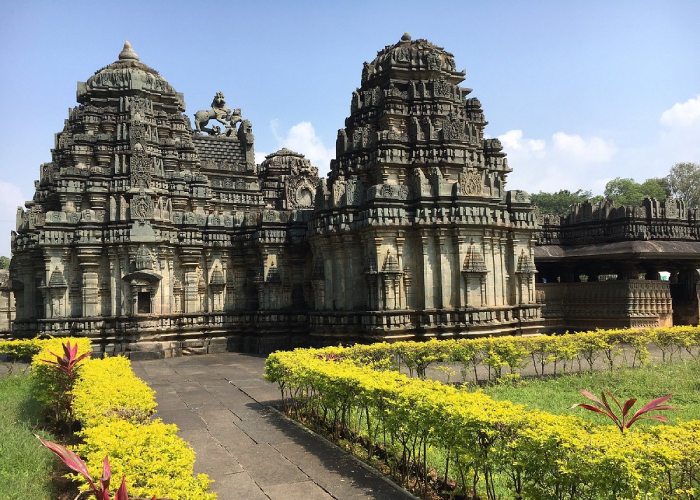
The Balligavi Kedareshvara Temple is built in the trikuta style, with three shrines facing east, north, and south, each with its own superstructure or shikhara. The western shrine has a vestibule, while the other two have a “half hall” (ardhamantapa). All shrines lead to a six-pillared hall known as maha mandapa, which is preceded by a large ornate open “gathering hall” known as sabha mandapa.]
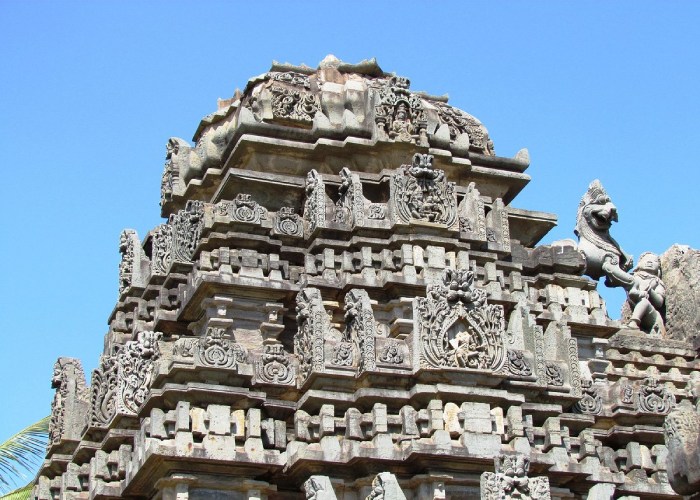
The gathering hall has a “staggered square” layout, which creates projections and recesses. Each wall projection has a complete “architectural articulation” (achieved through repetitive decoration). The gathering hall has three entrances: north, south, and east.

Except for the pilasters, which are capped by miniature decorative towers (aedicula), the outer walls of the shrines are quite austere. The superstructures over the shrines are three-tiered (tritala Arpita) vesara (a combination of south and north Indian styles), with sculptural details repeated in each tier.

Important Facts About Balligavi Kedareshvara Temple
- The Balligavi Kedareshvara Temple, a one-of-a-kind masterpiece of ancient Indian architecture, is located in the historical town of Balligavi in Karnataka’s Shimoga district.
- The Balligavi Kedareshvara Temple soapstone temple has distinct structural aesthetics, with abundant ornamentation, elegant sculptures, and intricately detailed architectural elements from both the Western Chalukya and Hoysala periods.
- The Temple faces East, which has three sides and a western Chalukya idiom on one side.
- The western shrine is thought to be the oldest, dating back to the 7th or 8th century. The mandapa’s ceiling is flat, and the inner ceiling is intricately carved with lotuses.
- The central shrine houses a Shivlinga made of black marble. The shrine to the south contains a Shivlinga known as Brahma, while the shrine to the north contains a statue of Janardhana, the supreme lord Vishnu.
- In 1060, King Vijayaditya incorporated the Hoysala symbol of Sala slaying tiger. All of the shrines lead to the maha mandapa, a six-pillared hall led by the sabha mandapa, a large ornate open gathering hall.
- The Archaeological Survey of India has designated the Balligavi Kedareshvara Temple as a protected monument.
- Sculptures from various eras are preserved in the museum adjacent to the Balligavi Kedareshvara Temple.
- Lord Vishnu, Naga Devata, Lord Veerabhadra, Mahishasuramardini, Sapta Matrikas, Trimurti, Lord Ganesha, Lord Kartikeya, and others can be seen here, as well as a four-faced Shiva Linga.
- Within the Balligavi Kedareshvara Temple complex, there is another shrine called Prabhudeva, as well as shrines dedicated to Lord Veerabhadra and Lord Shiva.
Best Time to Visit Balligavi Kedareshvara Temple
This place is very heavenly and spiritual, and you can visit it all year. The best time to visit this temple, however, is during the monsoon and winter seasons. During the monsoon season, this location receives moderate to heavy rainfall, making it appear heavenly with its greenery and bringing freshness elsewhere.
Famous Festivals In Balligavi Kedareshvara Temple
- Shravana: For happiness and wealth, many fasts, offerings, and mantras are performed during the fifth month of the Hindu calendar, known as Shravana.
- Mahashivaratri is a fasting ritual that takes place in the last week of February. It is reminiscent of Lord Shiva bringing Goddess Parvati with him. A Grand Celebration is arranged by priests and the temple committee.
How to Reach Balligavi Kedareshvara Temple
By Air: Hubli Airport is 130 kilometres away, and Belgaum Airport is 224 kilometres away from the temple.
By Rail: Shikaripura is the nearest major railway station from Balligavi at 22km from where you can get the train to all major stations of India.
By Road: To get here by road, you can take government or private vehicles from nearby cities. Ballagavi is only 72 kilometres from Shivamogga, 21 kilometres from Shikaripura, 179 kilometres from Udupi, and 151 kilometres from Gokarna.
Also Read – Chennakeshava Temple Belur
Location
Facilities
- Drinking Water
- Pooja Item Shops
- Prasad Shops
- Restaurants Nearby
- Resting Room

